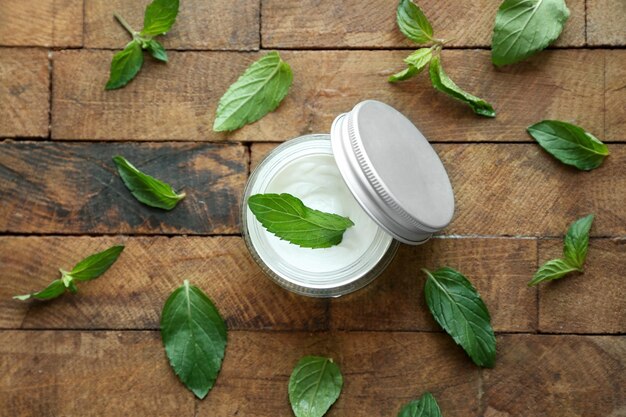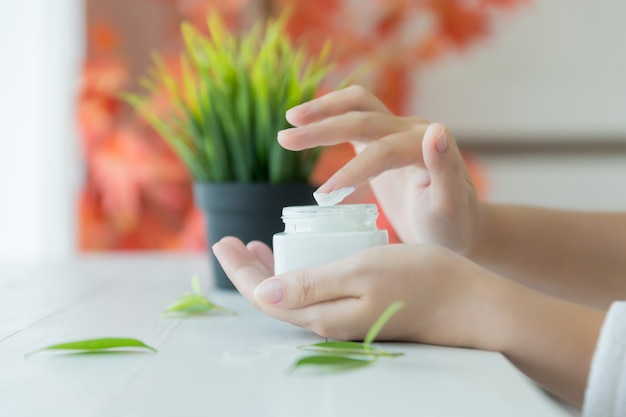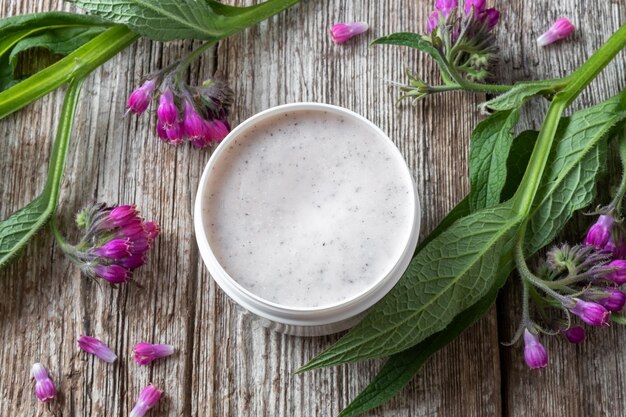Ask Ayurvedic doctor a question and get a consultation online on the problem of your concern in a free or paid mode. More than 2,000 experienced doctors work and wait for your questions on our site and help users to solve their health problems every day.
Shop Now in Our Store
Jatyadi Ghrita Ointment Uses: Exploring the Ayurvedic Approach to Skin and Wound Care

Jatyadi Ghrita ointment is a traditional Ayurvedic formulation cherished for its purported ability to promote wound healing and support overall skin health. Rooted in centuries of holistic practice, this herbal salve has garnered increasing attention in recent years as modern science looks more closely at the active compounds behind its therapeutic claims. From minor cuts to chronic ulcers, advocates of Jatyadi Ghrita emphasize its gentle yet profound effects on various skin concerns.
In this comprehensive guide, we will delve into the science behind Jatyadi Ghrita ointment uses, highlight the traditional and contemporary perspectives, and provide practical tips for those considering it as part of their wound-care routine. We will also integrate current research findings from reputable sources, including peer-reviewed journals and recognized medical institutions, to underscore both the potentials and limitations of this Ayurvedic gem.
Table of Contents
- What Is Jatyadi Ghrita Ointment?
- Key Ingredients and Their Potential Benefits
- Mechanism of Action: How Does Jatyadi Ghrita Work?
- Scientific Evidence and Research Highlights
- Common Uses in Wound Care and Skin Conditions
- Application and Dosage Guidelines
- Precautions, Side Effects, and Possible Interactions
- Frequently Asked Questions (FAQ)
- Conclusion: Balancing Tradition and Modern Science
- Disclaimer
1. What Is Jatyadi Ghrita Ointment?
Jatyadi Ghrita is a classic Ayurvedic formulation traditionally prepared from a base of ghee (clarified butter) infused with various medicinal herbs. The word “Ghrita” signifies ghee, which is highly prized in Ayurveda for its ability to carry herbal properties deep into the tissue layers. When formulated into an ointment, Jatyadi Ghrita is usually applied topically to address a range of skin and wound-related concerns.
Historical Roots
- Ancient Texts: Jatyadi Ghrita has been mentioned in several classical Ayurvedic texts, including the Charaka Samhita and Sushruta Samhita, often cited for its potential in wound management.
- Cultural Relevance: Many practitioners in rural regions of India still rely on Jatyadi Ghrita ointment for everyday cuts, burns, and other minor injuries.
Modern Popularity
- Increased Awareness: Over the last few decades, there has been a renewed global interest in holistic and herbal remedies. Jatyadi Ghrita ointment has benefited from this trend, with more individuals seeking natural wound-care options.
- Complementary Therapy: Some medical professionals now incorporate herbal ointments like Jatyadi Ghrita into integrative treatment plans, especially in settings where conventional care might need additional supportive measures.
2. Key Ingredients and Their Potential Benefits
The exact recipe for Jatyadi Ghrita may vary slightly by manufacturer or practitioner, but a standard preparation includes:
- Jati (Jasmine) – Often cited for its soothing and antimicrobial properties.
- Nimba (Neem) – Well-known for its potential to support healthy skin and fight infections.
- Haridra (Turmeric) – Rich in curcumin, which research suggests may offer anti-inflammatory and antioxidant benefits.
- Daruharidra (Tree Turmeric or Berberis aristata) – Traditionally used for its wound-cleansing and antimicrobial effects.
- Yashtimadhu (Licorice) – Recognized for its skin-soothing qualities and ability to potentially reduce irritation.
- Ghee Base – Acts as a potent carrier, aiding the delivery of herbal compounds into deeper skin layers, while also moisturizing and forming a protective barrier over wounds.
In combination, these herbs are synergistic, meaning they may work better together than if they were used individually. This concept is central to Ayurvedic practice, which emphasizes blending herbs to support comprehensive healing pathways.
3. Mechanism of Action: How Does Jatyadi Ghrita Work?
Holistic Wound Healing
According to Ayurvedic theory, wounds often disrupt the natural balance of the body’s doshas (Vata, Pitta, and Kapha). Jatyadi Ghrita aims to restore equilibrium by:
- Supporting Tissue Regeneration: The ointment’s herbal constituents are believed to promote the regrowth of damaged tissues.
- Reducing Inflammation: By harnessing the anti-inflammatory effects of turmeric and other herbs, Jatyadi Ghrita may help ease swelling and redness around the wound.
- Fighting Microbes: Ingredients like neem and jasmine are traditionally used to combat bacterial or fungal activity, decreasing the likelihood of infection.
Modern Pharmacological View
- Antimicrobial Activity: Preliminary in vitro (laboratory) studies suggest that extracts from ingredients such as neem and turmeric can inhibit the growth of certain bacteria and fungi.
- Antioxidant Properties: Several of Jatyadi Ghrita’s herbs are high in polyphenols and other antioxidants, which may help protect skin cells from oxidative stress—a factor that can delay wound healing.
4. Scientific Evidence and Research Highlights
While robust clinical trials on Jatyadi Ghrita ointment itself are still limited, various components have been extensively studied. Here are a few key points backed by reputable sources:
- Antimicrobial Efficacy: A study published in the Journal of Ethnopharmacology highlighted the broad-spectrum antimicrobial effects of neem (Nimba) extracts, indicating potential utility in wound-healing formulations.
- Turmeric and Wound Healing: A 2021 meta-analysis in the Journal of Clinical Medicine found that curcumin (the active compound in turmeric) may accelerate wound contraction and epithelialization, crucial phases in wound repair.
- Licorice for Skin Health: A review in Phytotherapy Research cited licorice extracts for their role in reducing inflammation and soothing irritated skin.
These studies, while focusing on individual herbs, give credence to the potential efficacy of Jatyadi Ghrita as a combined formulation. Further research—especially well-designed clinical trials—is needed to validate the exact therapeutic range and optimal usage protocols.
5. Common Uses in Wound Care and Skin Conditions
5.1 Minor Cuts and Abrasions
One of the most prevalent Jatyadi Ghrita ointment uses is treating minor skin traumas, including cuts, scrapes, and abrasions. Advocates claim that its antiseptic qualities help keep the area clean, while the ghee base maintains a moist environment conducive to healing.
5.2 Chronic Ulcers and Non-Healing Wounds
In Ayurvedic practice, Jatyadi Ghrita is sometimes recommended for chronic ulcers, such as diabetic foot ulcers or venous ulcers. Although conventional treatment should not be replaced, healthcare practitioners may consider adding Jatyadi Ghrita ointment as a complementary measure to support wound healing.
5.3 Burns and Scalds
Some anecdotal reports and small-scale clinical observations suggest that Jatyadi Ghrita might help soothe superficial burns by forming a protective layer and reducing inflammation. However, severe burns should always be evaluated and treated by a qualified healthcare provider.
5.4 Skin Infections and Rashes
Given the antimicrobial and anti-inflammatory properties of its herbal ingredients, Jatyadi Ghrita may offer relief from mild skin infections or rashes, including fungal issues like athlete’s foot. Still, medical advice should be sought for persistent or severe infections.
5.5 Anal Fissures and Hemorrhoids
Some Ayurvedic practitioners prescribe Jatyadi Ghrita ointment for anal fissures or hemorrhoids, capitalizing on its reputed capacity to soften tissues, reduce discomfort, and support healing.
6. Application and Dosage Guidelines
While specific recommendations can differ based on an individual’s health status and the severity of their skin concern, here are general guidelines:
- Cleanse the Area: Gently wash the wound or affected skin with mild soap and water or a recommended antiseptic solution.
- Pat Dry: Thoroughly dry the area to remove excess moisture.
- Apply a Thin Layer: Using clean hands or a sterile applicator, spread a thin layer of Jatyadi Ghrita ointment.
- Cover if Needed: For open wounds or areas prone to friction, consider covering with sterile gauze or a breathable bandage.
- Frequency: Reapply 1–3 times daily, or as advised by your healthcare provider.
Tip: Always consult with a qualified Ayurvedic practitioner or medical professional for personalized usage, especially for chronic or severe conditions.
7. Precautions, Side Effects, and Possible Interactions
Jatyadi Ghrita is generally regarded as safe for topical use by most people, but it is essential to be aware of potential issues:
- Allergic Reactions: Individuals with known sensitivities to any herbal ingredient (e.g., neem, turmeric) should perform a patch test before widespread application.
- Excessive Greasiness: The ghee base can stain clothing or dressings. Use sterile gauze or band-aids to help minimize mess.
- Potential Interactions: If you are already using other topical ointments or medication, consult a healthcare professional to rule out negative interactions.
- Serious Wounds: For severe injuries, deep wounds, or signs of infection (e.g., pus, high fever, red streaks), seek immediate medical attention. Jatyadi Ghrita ointment can be a supportive measure but should not replace professional care.
8. Frequently Asked Questions (FAQ)
Q1: Is Jatyadi Ghrita ointment safe for children?
A1: While many parents use it for minor scrapes or bug bites, it’s best to consult a pediatrician or qualified Ayurvedic practitioner. Always conduct a small patch test to rule out any allergic reaction.
Q2: Can I use Jatyadi Ghrita ointment on open, bleeding wounds?
A2: For deeper wounds or active bleeding, first control bleeding and seek medical advice if necessary. If recommended by a healthcare professional, you can apply Jatyadi Ghrita on partially closed or superficial wounds to support healing.
Q3: How long does it take to see results?
A3: Healing time varies based on wound severity, overall health, and adherence to proper wound care. Some notice improved skin quality within a few days, but chronic wounds may require a longer duration.
Q4: Can it replace antibiotic ointments entirely?
A4: Jatyadi Ghrita has antimicrobial properties but is not a guaranteed substitute for antibiotics, especially in serious infections. Always follow your doctor’s instructions regarding medication.
Q5: Does temperature affect its quality?
A5: Jatyadi Ghrita ointment is stable at room temperature, but extreme heat can alter its consistency. Store it in a cool, dry place for optimal shelf life.
9. Conclusion: Balancing Tradition and Modern Science
Jatyadi Ghrita ointment occupies a unique space where ancient Ayurvedic wisdom meets the growing field of herbal pharmacology. Its blend of natural ingredients—such as neem, turmeric, and jasmine—showcases potential antimicrobial, anti-inflammatory, and wound-healing effects. While anecdotal evidence and preliminary research are promising, it is crucial to remember that most data focus on individual herbs rather than the final ointment.
If you’re considering Jatyadi Ghrita ointment uses for wound care or other skin concerns, do so under the guidance of qualified healthcare professionals. By combining traditional wisdom with modern medical expertise, individuals can make informed decisions that optimize healing, safety, and overall well-being.
Call to Action: Found this article helpful? Share it with someone who might benefit from exploring natural wound-care solutions. For more in-depth discussions on Ayurvedic remedies, holistic wellness, and evidence-based health tips, subscribe to our newsletter or leave a comment sharing your experience.
10. Disclaimer
This article is for informational purposes only and does not substitute professional medical advice, diagnosis, or treatment. Always seek the guidance of a physician or other qualified health provider with any questions you may have regarding a medical condition. The views, opinions, and information expressed are based on currently available research and traditional Ayurvedic practices. They should not be taken as comprehensive medical guidance.
References and Further Reading
- Journal of Ethnopharmacology – Studies on Neem (Azadirachta indica)
- Journal of Clinical Medicine – Meta-analysis of Curcumin’s role in wound healing
- Phytotherapy Research – Review article on Licorice (Glycyrrhiza glabra) for inflammatory skin disorders
- Ayurveda and Integrative Medicine – Various studies examining the efficacy of herbal formulations in wound management
(For the most up-to-date and detailed analyses, please refer to the official websites of organizations like the
This article is checked by the current qualified Dr. Harsha Joy and can be considered a reliable source of information for users of the site.




